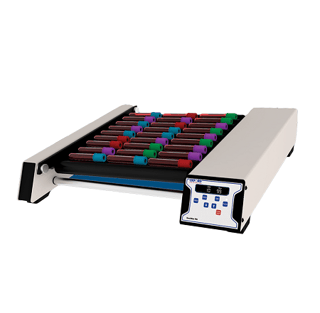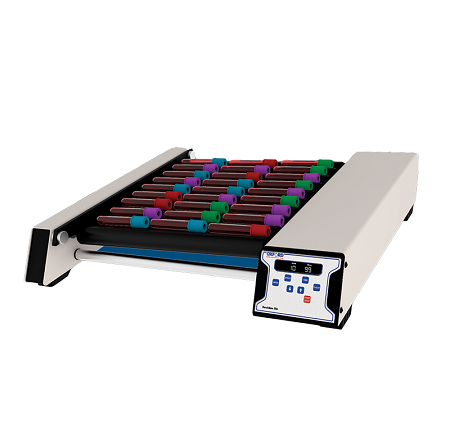Although tube rollers and rotators come in a variety of shapes, sizes, capacities, and configurations; the principle purpose remains to hold and spin a variety of sample tubes. These samples typically include blood collection tubes, centrifuge tubes, cell culture bottles, conical tubes, culture tubes, and microcentrifuge tubes. They are ideal for preventing blood from coagulating, maintaining a uniform mix between liquid-solid suspensions, performing western blotting protocols, and many other forms of continuous sample mixing.
The spin setup for many of these rockers incorporates a variety of angles and settings including smooth gentle rocking, agitation and pulse functions. The majority of current tube rotator motors used are free brushless DC motors that are not only quiet but last a long time. You will find that many tube rotators come with a minimum two-year warranty.

The standard and traditional rollers continue to be the flat tube rollers which tend to have a slight incline. These tube rotators are best for blood tubes, centrifuge tubes, and general mixing applications.
End over end tube rotator are designed for mixing samples in both a horizontal and vertical plane. Many tube rollers have incorporated a tilt angle feature that allows one end to elevate and return to the horizontal position. This gentle up and down motion helps to create a wave effect horizontally for an improved end to end mixing. Some have interchangeable rotisseries, holding various tube sizes from microcentrifuge tubes, conical tubes, and 96 well plates for agglutination assays. Many have settings that rotate, rock, and tumble.
The main differentiating features of tubes rotators are the analog or digital displays, fixed or variable speeds, fixed or variable angles, and programmability. Many have easy to clean features. With many rollers having detachable, easy to clean roller parts, that are also autoclavable.
On the upper end, there are even rotator and incubator combinations that are designed for immunoprecipitation, a technique of precipitating a protein antigen out of solution using an antibody that specifically binds to that particular protein. Many are designed to be used in high CO2, humidity, incubator and cold room environments. They are ideal for studying microorganisms and tissue cell growth under controlled agitation and temperature conditions. In addition, they perform hybridization and membrane-based assay washings in an effective manner.
Ease of use features for many of these rollers and rotators include timers, easy cleaning parts, stainless steel trays to collect accidental spillage. They are also very universal, with most tubes, bijoux, and bottles easily accommodated onto the rollers. They are perfect for research facilities, clinical laboratories, and physician’s offices.



